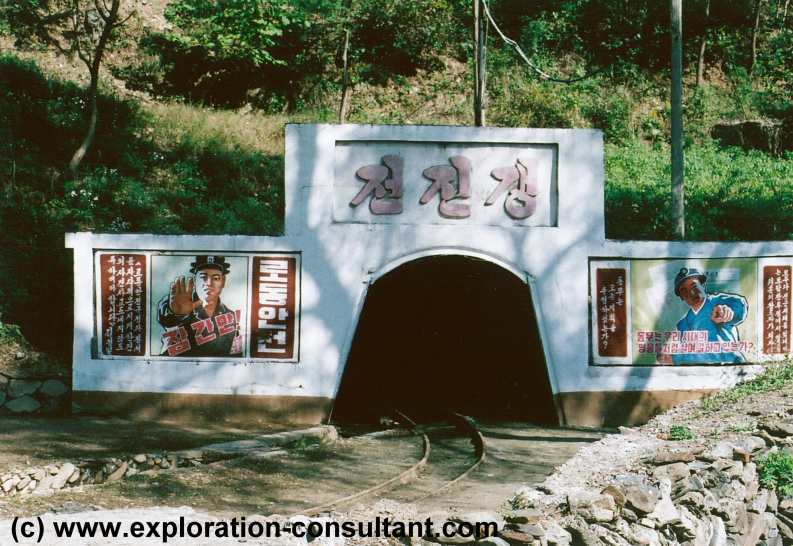|
|
Susan Titanium Mine (open pit) near Nmapo, Kangso County, Southern Hwanghae Province: An eluvial deposit derived from the weathering of amphibolites. The main ore mineral is ilmenite or to be precise titanomagnetite, accessories are zircon, rutile and garnet. The reserves of unknown category were given with 400 million tons @ 5-6 % TiO2 . The ore is mined by dredging and transported in small cars to the ore dressing plant. The fine fraction is concentrated by heavy media separation, the oversize fraction is ground in ball mills. Trucks carry the concentrate to a plant to produce titanium slag.
Kamuri Mine District, Singye County, Northern Hwanghae Province: In the past, copper-bearing veins and molybdenite-quartz veins were mined in this region. Platinum- and gold bearing carbonaceous
schists and conglomerates of the Upper Proterozoic Pirandong Series are described from the surrounding area. No mining is taking place.
Pyongsan Fluorspar Mine, Northern Hwanghae Province: Due to technical problems, this underground mine stands still. Geologically, these are either steeply dipping massive discordant veins in a
carbonaceous
sedimentary host rock or stratiform layers (replacement type or marine sedimentary). Two types of fluorite ore prevail, a purple variety or a grayish-white type of better quality. The veins/layers are 20 – 40 m wide and can be traced for over 6 km. The ROM grade is 26 % CaF2, the tailings contain 12- 14 % CaF2. When active, the mine produces two different qualities through hand-picking.
Other samples and concentrates investigated were: pyrochlore concentrate (niobium-tantalum ore), mineral fertilizer, molybdenite concentrate, sedimentary mordenite (a zeolite), pigments, high purity
zinc powder, high purity cadmium sulfide and others.
|
|
|


